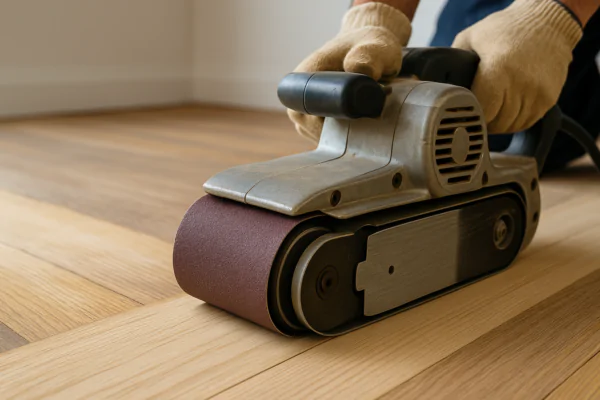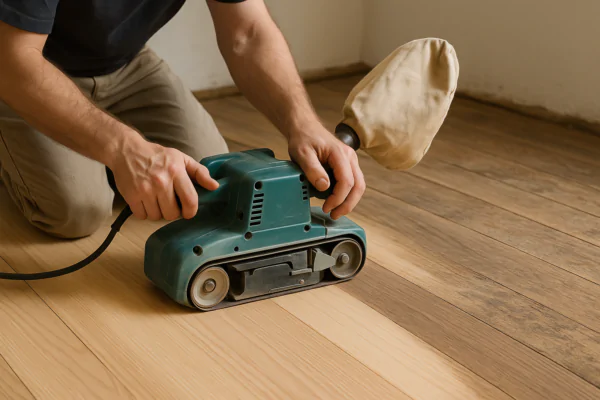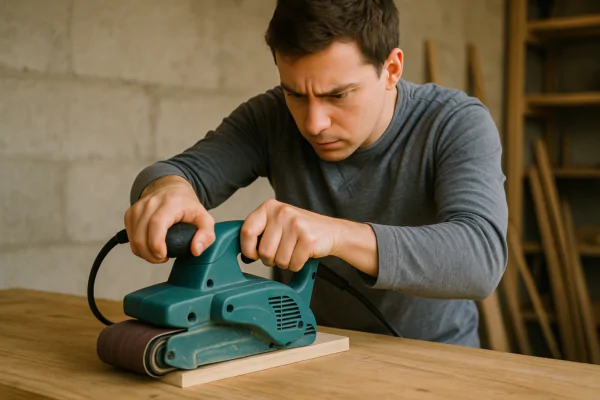How to Use a Belt Sander on Wood Floors?
Are your wood floors looking scratched and worn? Do you dream of bringing them back to life? Using a belt sander might seem daunting, but it’s a powerful tool for refinishing.
You can effectively use a belt sander on wood floors to remove old finishes and smooth the surface. Start with a coarse grit sandpaper and move up to finer grits for a professional result.
Using a belt sander requires careful technique.
Refinishing your wood floors can transform a room. A belt sander is a key tool in this process, but knowing how to use it correctly is essential for a smooth finish.
Can I Sand My Wood Floor with a Belt Sander?
Is your wood floor covered in scratches and uneven spots? Are you wondering if you can use a belt sander to fix it? A belt sander is a powerful tool, perfect for tackling tough floor refinishing jobs.
Yes, you can sand your wood floor with a belt sander. It’s a common tool for removing old finishes and preparing the wood for a new stain or sealant.
A belt sander is effective for floor sanding.
When using a belt sander on your wood floor, start with a coarse grit sandpaper. This will remove the old finish and any imperfections. Then, move to a medium grit to smooth the surface, followed by a fine grit for a polished look. Always keep the sander moving to avoid creating divots. Sand with the grain of the wood for the best results. For challenging areas or edges, you might need a different tool. Our NOVOGRIT brand offers a range of sandpaper options that work well with belt sanders for wood floors.
Do You Go Back and Forth with a Belt Sander?
Are you trying to sand your wood floor and unsure of the best movement? Do you wonder if you should move the belt sander back and forth? The technique you use is important for a smooth finish.
No, you should not go back and forth with a belt sander in the same spot. This can create unevenness and gouges in the wood floor.
Avoid going back and forth directly.
When using a belt sander on your wood floor, the key is to move in a continuous, overlapping pattern. Think of it like mowing a lawn. You make a pass, lift the sander slightly, and then make another pass next to the first one, overlapping slightly. Start at one end of the room and work your way across, always moving with the grain of the wood. Never stop the sander while it’s in contact with the floor. This will create a divot. Always lift the sander before stopping it or changing direction. Consistency in your movement is key to a smooth, even finish.
How Do You Use a Belt Sander for Beginners?
Are you new to refinishing wood floors? Do you want to use a belt sander but feel unsure where to start? Learning the basics is crucial for a successful project.
For beginners, start with a practice piece of wood to get a feel for the belt sander’s power and movement. Always wear safety gear, and learn how to change the sandpaper correctly.
Practice is important for beginners.
Before you start on your floor, practice on a scrap piece of wood. This will help you understand how the sander moves and how much pressure to apply. Always wear safety glasses and a dust mask. Belt sanders create a lot of dust. Learn how to properly load and unload the sandpaper belt. Each grit of sandpaper has a specific purpose. Start with a coarse grit to remove old finishes, then move to medium and fine grits for a smooth surface. When you start on the floor, keep the sander moving constantly. Never let it sit in one spot while it’s running. Move with the grain of the wood in overlapping passes. Take breaks often to check your progress and clear dust.
Is a Belt Sander Good for Floors?
Are you considering refinishing your wood floors? Do you need to know if a belt sander is the right tool for the job? Choosing the correct sander is important for getting the best results.
Yes, a belt sander is very good for refinishing wood floors, especially for removing tough finishes and leveling uneven areas. It is a powerful and efficient tool for this purpose.
A belt sander creates a smooth surface.
A belt sander is an excellent tool for tackling wood floor refinishing projects. Its power and speed make it ideal for removing old layers of paint, varnish, or stain. It can also help to level out minor imperfections and prepare the surface for a new finish. While a belt sander is powerful, it also requires careful handling to avoid damaging the floor. For large areas, a drum sander might be used, but belt sanders are versatile and effective for many home projects. Remember to use the correct grit sequence and sand with the grain. NOVOGRIT offers durable sandpaper belts that perform well on wood floors, helping you achieve a smooth, professional finish.
Conclusion
Using a belt sander on wood floors requires careful technique, moving with the grain in overlapping passes and using the correct sandpaper grits for a smooth, professional finish.
You may also be interested in:

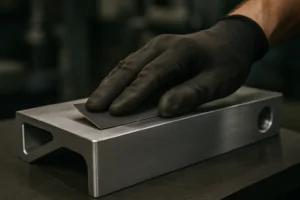
Best Sandpaper for Aluminum: NOVOGRIT's Guide to Flawless Finishes
What is the Best Type of Sandpaper to Use on Aluminum? Do you find yourself frustrated by sandpaper that gums up instantly when you try to smooth aluminum? It is
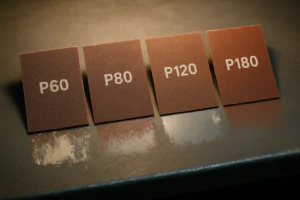
Best Sandpaper for Paint Removal: Grits, Types, & Tips | NOVOGRIT
What is the Best Sandpaper for Removing Paint? Are you tired of staring at chipped, peeling paint on your furniture, walls, or even your car? It’s a common problem, and

Automotive Wet Sanding: Supplies, Liquids & Best Sandpaper
Automotive Wet Sanding Supplies: What Do You Really Need? Wet sanding is a crucial technique in automotive refinishing, used to achieve a flawlessly smooth surface before painting or polishing. Unlike
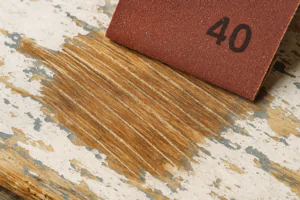
Best Sandpaper for Paint Removal & Grit Guide
What Is the Best Sandpaper for Removing Paint? Removing old paint can be a tedious job, but using the right sandpaper makes all the difference. It’s not just about grit;
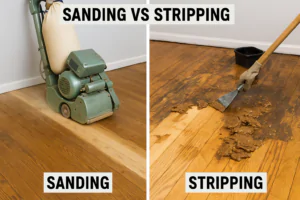
Hardwood Floor Sanding: Screen vs. Sandpaper & Best Practices
Sanding Screen vs. Sandpaper for Hardwood Floors: Which is Best? When you’re tackling hardwood floor projects, choosing the right abrasive is crucial for achieving a smooth, professional finish. Both sanding
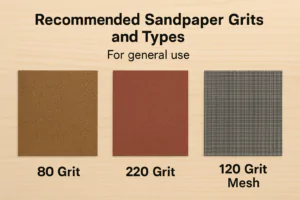
Paper Backing vs. Mesh Sanding Discs: Which Abrasive to Choose?
Paper Back vs. Mesh Sanding Discs: Which One Should You Pick? Choosing the right sanding disc backing can significantly impact your project’s efficiency and finish quality. Paper-backed discs are a
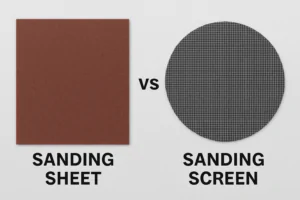
Sanding Mesh vs Paper: Which is More Economical and Better?
Is Sanding Mesh More Economical Than Sandpaper? Comparing Abrasive Costs When stocking up on abrasives, cost is always a factor. Paper sandpaper has traditionally been the standard, but newer mesh
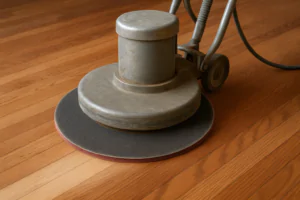
Sanding Nets & Screens Use Cases: When to Choose Mesh Abrasives
Sanding Nets and Screens: What Are Their Best Use Cases? When you encounter sanding nets or screens, you might wonder where they fit into your sanding projects. Unlike traditional solid-backed
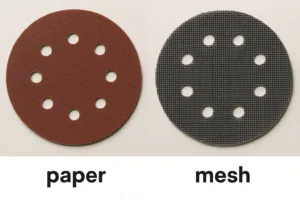
Paper vs. Mesh Sanding Discs: Which Abrasive to Choose?
Paper vs. Mesh Sanding Discs: Which Should You Buy? Choosing the right abrasive disc is essential for efficient and effective sanding. Two primary types dominate the market: traditional paper-backed discs

